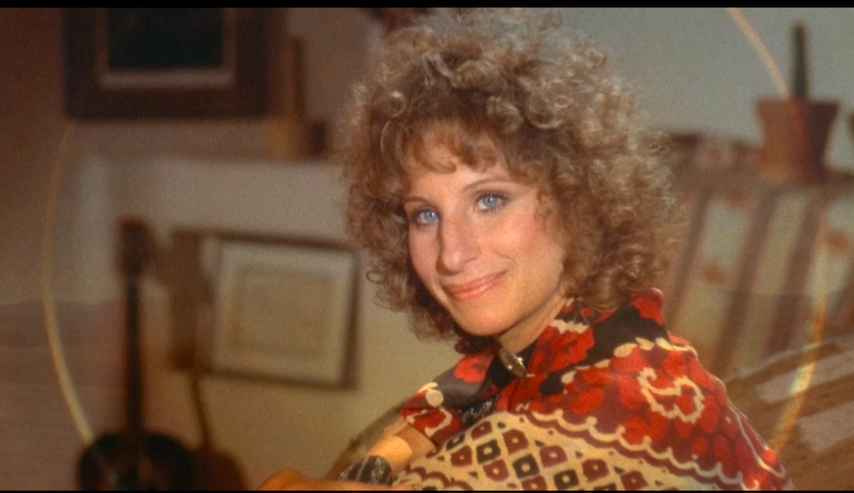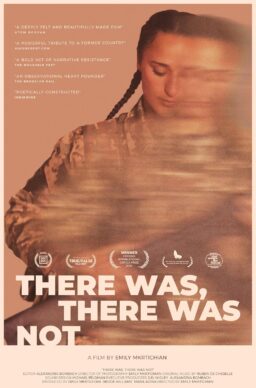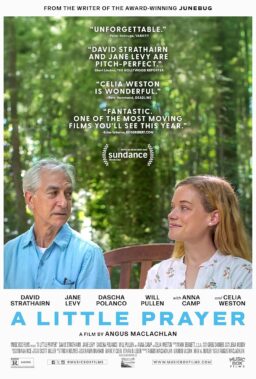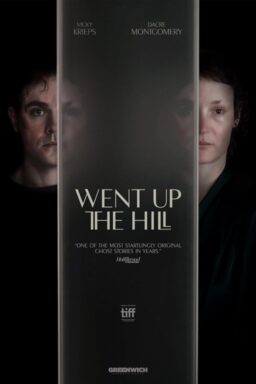The 1976 Barbra Streisand-Kris Kristofferson production of “A Star is Born” is the third official version of the tale —the fourth if you count the 1932 drama “What Price Hollywood?”, which preceded all of them, and provided the basic template of the washed-up older male entertainer mentoring and marrying a younger, more talented woman. It was by far the most troubled, thanks mainly to the huge egos involved in the production and the specific era in which it was made, a time of glitz, bloat, delusions of artistic godhood, and Matterhorns of white powder.
It’s a bad movie in a lot of ways, but not without bright spots, in particular the costumes (drawn partly from Streisand’s own closet, according to the end credits); Streisand’s powerhouse lungs; the colorful supporting players, including director Paul Mazursky as the duo’s manager and Gary Busey as a producer who personally spoons cocaine into people’s nostrils; and Kristofferson’s performance (trashed as bored and distracted in 1976, but looking like a minimalist masterpiece today) as alcoholic rock star John Norman Howard. The latter was modeled on Janis Joplin and other self-immolating ’60s pop icons, as well as prior incarnations of the mentor-lover-flameout character. John is the sort of macho waste case who fires a handgun at a reporter’s helicopter, then apologizes by delivering a case of Jack Daniel’s to his office.
Strangely, neither Kristofferson nor Streisand (playing singer Esther Hoffman, whom Howard discovers in a cabaret with two black female singers in a group called The Oreos) seem entirely comfortable with the music that’s supposed to be the water they naturally swim in. You’d think this would destroy the movie, but somehow it doesn’t. There’s just enough sexual chemistry and mutual artistic respect between the leads to power the story through to the end, although a lot of their banter is overwritten or delivered in what feels like a forced, borderline-screwball manner.
Kristofferson was an Army veteran who got a job sweeping floors at Columbia Records in 1965, convinced June Carter to give his demo tape to her husband Johnny Cash, and went on to become a successful singer-songwriter, an avatar of so-called “outlaw country,” and a movie star appearing in the likes of “Pat Garrett and Billy the Kid” and “Alice Doesn't Live Here Anymore.” Among other hits, he wrote “Me and Bobby McGee,” Joplin’s signature. It seems strange that he didn’t get to write his own music for this movie, in a rock or country or some other idiom, as it might’ve enhanced the credibility of the movie, Kristofferson’s character in particular.
As is, John’s bombastic art rock plays like a hack Hollywood songwriter’s imitation of that kind of music. There’s really only one song, repeated ad nauseam, “Watch Closely Now,” which sounds like a lost musical parody from Carol Burnett’s old variety show (“Your eyes are like fingers/They’re touching my body and arousing my soul”).
The numbers that Esther performs feel only slightly less patched together, including the future Oscar winner “Evergreen,” which starts, “Love/Soft as an easy chair” and grows its lapels wider by the second. Streisand was more about show tunes and standards, at least early in her career. She was seven years removed from winning a Best Actress Oscar for “Funny Girl” when this picture began production. She often seems awkward performing the film’s original music (credited to seven people, including Streisand and Paul Williams). She’s always technically on-point, of course, being Babs, and her high notes could shatter aluminum, but she doesn’t seem to be really feeling any of it except at the very end, a stunning seven-minute unbroken closeup of Esther debuting her late husband’s final original song, “”With One More Look at You” followed by one more reprise of “Look Closely Now,” in case anybody felt they needed one.
On the plus side, however the leads felt about each other during filming, they seem to enjoy each other on camera most of the time. That’s a lucky break for the audience, because they’re onscreen for most of the two hour, nineteen minute running time of “A Star is Born.” The moments when Streisand laughs raucously at Kristofferson’s rustic clowning or paints his face with makeup in a bathtub that’s lit by candles stuck in empty beer cans have an authentic, seedy-sexy flavor, and they compensate for the fact that, by the time John meets Esther, she seems so poised and confident that you have to wonder how badly she needed him for anything, including a career jump-start (there’s never any doubt what he saw in her, however: rejuvenating brilliance). John’s violent temper and tendency to prankishly destroy things will set off alarm bells in modern viewers, but they’re consistent with mid-20th century portraits of masculinity in American film, which critiqued men’s social conditioning but also felt the need to show charismatic tough guys lighting up the screen with rage and despair and glamorizing their implosions. The big tearjerking scene at the very end might remind film history conscious viewers of another 1976 hit, the remake of “King Kong,” which likewise concerned a lovestruck hairball who declined after being removed from his comfort zone.
The script for this “Star” passed through the hands of many writers, including the married team of John Gregory Dunne and Joan Didion. Dunne and Didion would revisit the story again two decades later, unofficially, in 1996’s “Up Close and Personal,” starring Michelle Pfieffer as a TV reporter mentored by Robert Redford’s news producer. This film’s eventual director, Frank Pierson, originally signed on to for a last-minute rewrite (he was just coming off a classic, “Dog Day Afternoon”). He was so unhappy with what he perceived as the rampant narcissism of Streisand and her executive producer and then-husband Jon Peters—a former Hollywood hairdresser who was the model for Warren Beatty’s character in “Shampoo”—that he would go on to write a scathing account of the shoot that was published in two magazines, New West and New York. This earned him the enmity of Streisand and Peters, who considered it an unprecedented betrayal (in some ways it was; it was rare for a director to trash his own film prior to release verbally, let alone twice in print). In a lot of ways, this is still the least of all the “Star” films, more interesting to read about than watch. But as a glimpse into a long-gone era, it remains tantalizing, especially if you’re a fan of the main actors.












